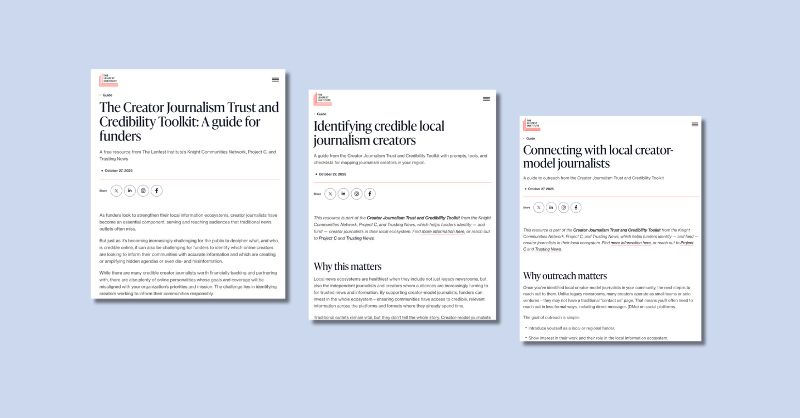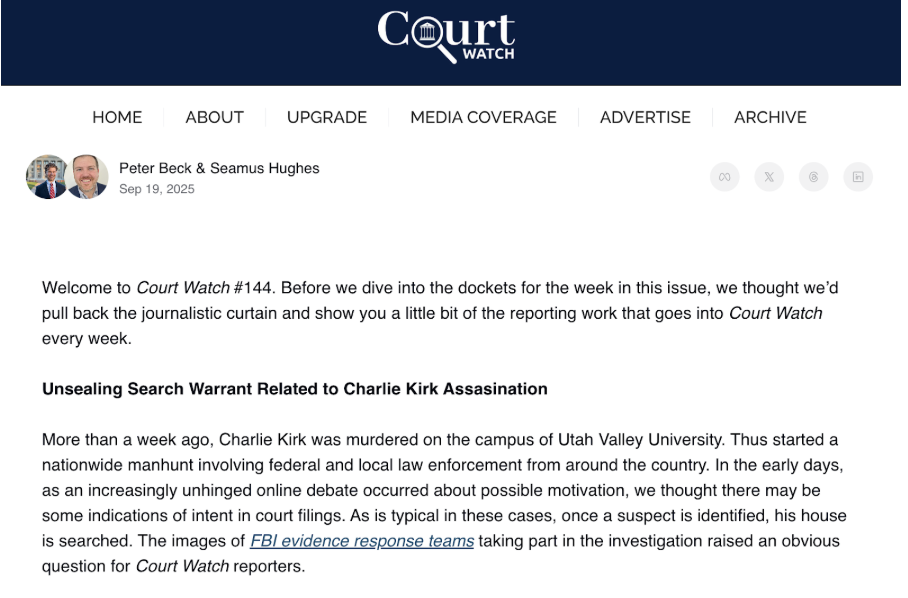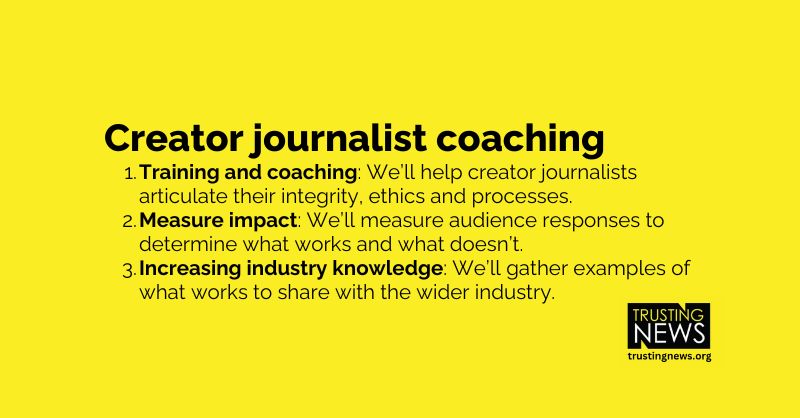
This new checklist will help you see which sources are trustworthy
How credible is that person on TikTok? Here’s a checklist.
With more influencers and news sources emerging online each day, it’s becoming increasingly difficult to decipher if what we’re seeing online is actually true.
Even for us journalists (who, let me remind you, are NOT average news consumers and are much more well-versed in news literacy than the average American), it can be hard to determine what sources are credible when quickly scrolling through social media.
That’s why we’re excited to share a new Creator Journalism Trust and Credibility Toolkit from Trusting News and Project C, created in collaboration with The Lenfest Institute for Journalism with support from The John S. and James L. Knight Foundation. While the Toolkit is geared toward helping funders find ethical creator journalists in their area, it also includes an ethics checklist to help you assess whether creator journalists and online influencers are working to be fair and accurate. (You’ll find the ethics checklist under the Evaluating Credibility section of this post.)
Here are 3 ways we see this checklist being useful for working journalists
- Run your own journalism through the checklist. If you walked you or your newsroom through this same ethics checklist, would you be able to confidently say all these ethical principles are visible in your day-to-day journalism? More importantly, do you think your audience would say they can regularly spot these signals? If there are aspects of your credibility and mission that you’re unsure would be clear to your audience, consider this an invitation to examine that.
- Use it to help vet potential collaborators. As influencers and creators successfully reach audiences who might otherwise tune out from the news, it’s smart to consider how you might partner and collaborate with these informers. While not every creator will be a good fit to collaborate with, this checklist can help you spot responsible creators who are ethically aligned with your journalism. This checklist builds off the work we’ve done with the American Press Institute and their incredibly helpful guide for how newsrooms can collaborate with influencers.
- Explain who YOU trust to the public. Journalists see potential news tips everywhere and routinely have to decide whether they’re credible. What are your processes for determining whether a source is legitimate or not? As you think about your own sourcing best practices and how you vet information that comes across your desk, consider letting your audience into that process. Sharing what ethics and credibility signals you look out for can help your audience better navigate the information they’re seeing online.
✔️ Checklist: Basic questions to assess credibility
Find the entire ethics checklist in the guide here, in the Evaluating Credibility section. But to start, here are a few basic questions to help you assess whether the people and accounts popping up on social feeds are credible and trustworthy.
- Are they transparent about the funding behind their coverage? The public is skeptical about whether online content is authentic or a marketing ploy. While many creators rely on advertisements and sponsorships to stay in business, credible creators should get clear about these funding sources and share any potential conflicts of interest. On a basic level, this looks like disclosing ads, gifts and sponsorships. But it could also look like creator journalists sharing more details about how they are funded and how they maintain editorial independence.
- Is it clear when they’re sharing their analysis or opinion? Creators’ personality-driven content and clear points of view are reasons why people turn to them as trusted informers. While creators may share their perspectives or experiences more than traditional journalists, it can become ethically murky if they share opinions and present those opinions as fact. Look to see if they are clear about what content is opinion and when they are intentionally sharing personal beliefs or analysis.
- Is it clear their goal is to inform? Or does it seem like they have another agenda or motive behind their coverage? Of course, not every online creator has the goal of being a public service to their audience. Look for creators who are clear their purpose is to share credible information with their communities.
Check out the Creator Journalism Trust and Credibility Toolkit
This checklist is part of the larger Creator Journalism Trust and Credibility Toolkit, which is aimed at helping funders find and support creator-model journalists in local information ecosystems.
Whether you’re a funder, creator journalist, or traditional journalist curious about how to collaborate with creators, we think you’ll find this Toolkit helpful. We invite you to check it out and let us know what questions or comments come up as you do! You can always reply directly to this newsletter — we read every response!
At Trusting News, we learn how people decide what news to trust and turn that knowledge into actionable strategies for journalists. We train and empower journalists to take responsibility for demonstrating credibility and actively earning trust through transparency and engagement. Learn more about our work, vision and team. Subscribe to our Trust Tips newsletter. Follow us on Twitter, BlueSky and LinkedIn.

Project manager Mollie Muchna (she/her) has spent the last 10 years working in audience and engagement journalism in local newsrooms across the Southwest. She lives in Tucson, Arizona, where she is also an adjunct professor at the University of Arizona’s School of Journalism. She can be reached at mollie@trustingnews.org and on Twitter @molliemuchna.



